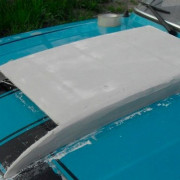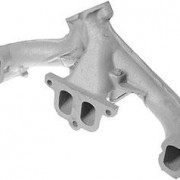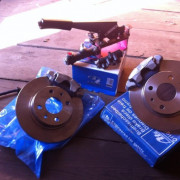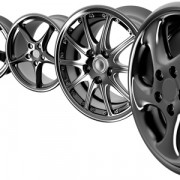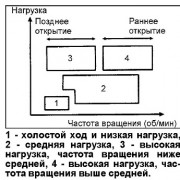Обзор колодок g brake
Содержание:
Каталожные артикулы и совместимые технические средства
| Артикул | Марка / модель автомобиля |
|---|---|
| GP-00037 | NISSAN |
| GP-00045 | —/— |
| GP-00051 | —/— |
| GP-01001 | —/— |
| GP-01002 | —/— |
| GP-01003 | —/— |
| GP-01004 | —/— |
| GP-01025 | —/— |
| GP-01026 | TOYOTA |
| GP-01031 | —/— |
| GP-01063 | —/— |
| GP-01092 | —/— |
| GP-01102 | —/— |
| GP-01110 | —/— |
| GP-01116 | —/— |
| GP-01119 | DAIHATSU |
| GP-01121 | —/— |
| GP-01124 | —/— |
| GP-01133 | —/— |
| GP-01136 | —/— |
| GP-01142 | MAZDA |
| GP-01148 | —/— |
| GP-01165 | —/— |
| GP-01170 | —/— |
| GP-01211 | —/— |
| GP-01227 | —/— |
| GP-01230 | —/— |
| GP-01231 | SUZUKI |
| GP-01233 | —/— |
| GP-01239 | —/— |
| GP-01248 | —/— |
| GP-01250 | —/— |
| GP-01253 | —/— |
| GP-01263 | —/— |
| GP-01279 | JEEP |
| GP-01282 | —/— |
| GP-01284 | —/— |
| GP-01288 | —/— |
| GP-01294 | —/— |
| GP-01304 | —/— |
| GP-02001 | —/— |
| GP-02003 | —/— |
| GP-02005 | —/— |
| GP-02006 | —/— |
| GP-02007 | —/— |
| GP-02023 | ISUZU |
| GP-02050 | —/— |
| GP-02059 | —/— |
| GP-02062 | —/— |
| GP-02067 | —/— |
| GP-02069 | —/— |
| GP-02075 | —/— |
| GP-02082 | —/— |
| GP-02087 | —/— |
| GP-02088 | SUBARU |
| GP-02090 | —/— |
| GP-02094 | —/— |
| GP-02102 | —/— |
| GP-02104 | —/— |
| GP-02114 | —/— |
| GP-02118 | —/— |
| GP-02121 | HONDA |
| GP-02125 | —/— |
| GP-02126 | —/— |
| GP-02131 | —/— |
| GP-02134 | —/— |
| GP-02150 | —/— |
| GP-02160 | —/— |
| GP-02163 | MITSUBISHI |
| GP-02166 | —/— |
| GP-02173 | —/— |
| GP-02174 | —/— |
| GP-02177 | —/— |
| GP-02179 | —/— |
| GP-02180 | —/— |
| GP-02183 | RENAULT |
| GP-02187 | —/— |
| GP-02193 | —/— |
| GP-02198 | —/— |
| GP-02202 | —/— |
| GP-02207 | —/— |
| GP-02212 | —/— |
| GP-02215 | —/— |
| GP-02217 | —/— |
| GP-02218 | LEXUS |
| GP-02217 | —/— |
| GP-02219 | —/— |
| GP-02222 | —/— |
| GP-02223 | —/— |
| GP-02224 | —/— |
| GP-02228 | —/— |
| GP-02242 | —/— |
| GP-02243 | NISSAN / TOYOTAGP-02249 |
| GP-02249 | —/— |
| GP-02250 | —/— |
| GP-02252 | —/— |
| GP-02253 | —/— |
| GP-02257 | —/— |
| GP-02266 | —/— |
| GP-02268 | —/— |
| GP-02269 | —/— |
Перечень представлен для ознакомления с каталожными артикулами. Перед покупкой предварительно получите консультацию у специалиста СТО, менеджера автомагазина. Точные индексы указаны в инструкции по эксплуатации вашего технического средства.

Пожалуйста, помогите c переводом:
1. Lol when @hartdenton develops his coachella polaroids
2. Usting @melton as my bitch for gueen
3. Trying to pack for LA
4. Fresh nails wha dis
5. Me once my motor cycle license is done this summer
6. So cute
7. The detail. . . even down to my snake rings. . . Amazing!
Английский-Русский
It slides comfortably into the ‘affordable’ bracket though, considering its supersized display, and when it lands on contract (which should be soon) it won’t carry hefty monthly fees.
Английский-Русский
Measuring the positive side of the work–family interface: Development and validation of a work–family enrichment scale
Английский-Русский
Giving a definition of the term “comedy”, one may face some difficulties as it’s one of the most complex categories of aesthetics. Comedy is historically volatile, it depends on the context and has a social nature. The laughter is not always a sight of comedy, and comedy is not always defined by laughter. It is circumstances, sharpening the contradictions and helping to reveal its social nature
Английский-Русский
Braking is a Compromise
Back to the question at hand – semi-metallic vs. ceramic brake pads. As said before, there is no single brake pad that can reign supreme in every single situation. If you want clean, quiet stops, you’ll pay for it in braking performance. If you want massive amounts of brake bite under extreme temperatures, you’ll be cleaning your wheels every few days. That’s just the way it works in the world of brakes. Ceramic pads offer quieter stops, cleaner wheels, and generally longer pad life due to their harder composition. The downsides include less cold bite, rendering them less effective in cold weather or before the brakes are up to temperature. In addition, they typically have a lower coefficient of friction than their semi-metallic counterparts (the higher the coefficient of friction, the better a brake pad will stop your vehicle). Ceramic pads were never designed to be extreme performance or racing brake pads. The ceramic material is also a less-effective heat sink than their metallic equivalents – instead they act almost like an insulator. The less heat the pad is able to absorb, the more the heat is retained in the brake rotor and surrounding components, which can lead to increased temperatures of the entire brake system.
Organic Brake Pads
Organic brake pads (also known as NAO, or “non-asbestos organic”) were developed as an alternative to asbestos pads, composed of various fibers mixed with binding resins to hold them together. Some common materials used in organic brake pads include glass, fiber, rubber, carbon and Kevlar. The materials and tools used to manufacture organic brake pads are still the least expensive today, which is why the majority (roughly 70%) of new cars sold in the US still come with them from the factory.
Pros:
- Soft, quiet, easy on brake rotors
- Don’t require much heat to generate good friction
- Produce less dust than metallic pads
- Low manufacturing cost
- Suitable for normal driving/commuting across many environments
- Perfect for every day vehicles and drivers
Cons:
- Only operate well within a relatively limited temperature range
- Wear out quickly compared to other types of brake pads
- High compressibility – can cause “mushy” brake pedal feel
- Will quickly lose their coefficient of friction when overheated
- Not at all suitable for performance driving
Semi-Metallic Brake Pads
As the name implies, semi-metallic pads contain anywhere from 30-65% metal by weight, typically consisting of steel, iron, copper, etc. combined with friction modifiers and fillers, as well as a graphite lubricant. Semi-metallic brake pads are arguably the most versatile style available, with the slight compromise being more noise and dust. They are also longer lasting and more durable, and their metallic composition can help draw heat away from the rotor and aid in more efficient brake cooling.
Pros:
- Dramatically increased braking performance over organic pads
- Have a much higher thermal threshold due to metallic content
- Still provide good cold bite
- Have a much wider operating range (temperature)
- Low compressibility – will provide a firmer brake pedal feel
- Much more resistant to brake fade than organic pads
- Numerous compounds available – suitable for anything from daily street driving to extreme track use
Cons:
- Tend to be noisier than organic or ceramic pads
- Produce more brake dust
- More abrasive than other types of pads – will wear brake rotors more quickly
- More expensive than organic pads (but generally cheaper than ceramic)
- Require careful and proper bedding-in for best performance
Ceramic Brake Pads
The comparative new kid on the block is the ceramic brake pad. Ceramic pads are composed of a dense ceramic material (like pottery fired in a kiln) with embedded copper fibers. In use since the 1980s, ceramic pads were developed as an alternative replacement for organic and semi-metallic brake pads because at the time these types produced too much noise and dust. Ceramic pads are also generally easier on rotors than semi-metallic pads.
Pros:
- Quieter than semi-metallic pads – emit noises that are above the range of human hearing
- Produce finer, lighter-colored brake dust which does not stick to wheels
- Longer lifespan than organic or semi-metallic
- Stable under a wide range of temperatures for consistent performance
Cons:
- Typically the most-expensive type of brake pad
- Do not produce as much cold bite as semi-metallic pads – may not be ideal in extremely cold climates
- Do not absorb heat as well as semi-metallic pads which can increase brake system temperatures
- Good all-around braking characteristics but were never designed as heavy duty/racing brake pads
Back to the question at hand – semi-metallic vs. ceramic brake pads. As said before, there is no single brake pad that can reign supreme in every single situation. If you want clean, quiet stops, you’ll pay for it in braking performance. If you want massive amounts of brake bite under extreme temperatures, you’ll be cleaning your wheels every few days. That’s just the way it works in the world of brakes. Ceramic pads offer quieter stops, cleaner wheels, and generally longer pad life due to their harder composition. The downsides include less cold bite, rendering them less effective in cold weather or before the brakes are up to temperature. In addition, they typically have a lower coefficient of friction than their semi-metallic counterparts (the higher the coefficient of friction, the better a brake pad will stop your vehicle). Ceramic pads were never designed to be extreme performance or racing brake pads. The ceramic material is also a less-effective heat sink than their metallic equivalents – instead they act almost like an insulator. The less heat the pad is able to absorb, the more the heat is retained in the brake rotor and surrounding components, which can lead to increased temperatures of the entire brake system.
Ceramic Brake Pads
The comparative new kid on the block is the ceramic brake pad. Ceramic pads are composed of a dense ceramic material (like pottery fired in a kiln) with embedded copper fibers. In use since the 1980s, ceramic pads were developed as an alternative replacement for organic and semi-metallic brake pads because at the time these types produced too much noise and dust. Ceramic pads are also generally easier on rotors than semi-metallic pads.
Pros:
- Quieter than semi-metallic pads – emit noises that are above the range of human hearing
- Produce finer, lighter-colored brake dust which does not stick to wheels
- Longer lifespan than organic or semi-metallic
- Stable under a wide range of temperatures for consistent performance
Cons:
- Typically the most-expensive type of brake pad
- Do not produce as much cold bite as semi-metallic pads – may not be ideal in extremely cold climates
- Do not absorb heat as well as semi-metallic pads which can increase brake system temperatures
- Good all-around braking characteristics but were never designed as heavy duty/racing brake pads

